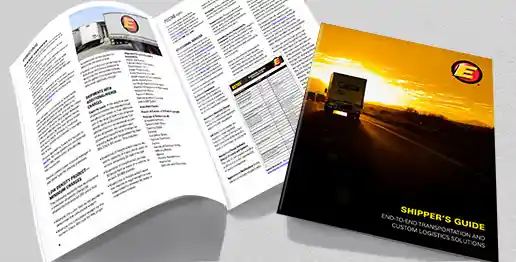Class and Density Calculator
Use this tool to calculate your freight's cube and density to help you determine your estimated freight class and rates. Please note that we may also reweigh and dimension your freight to verify density once we've picked up your shipment. For more on shipment classification and weight, see our Frequently Asked Questions (FAQs).
A: National Motor Freight Classification (NMFC) freight classes are assigned based on four characteristics of your shipped commodity:
- Density - The weight of the commodity relative to the amount of space it occupies, which can be quickly determined using our online Class and Density Calculator; high density items will fall under lower classes and are less expensive to transport
- Handling - How the size, shape, and fragility of a commodity affect its handling requirements; items that need special attention (e.g., are hazardous or irregularly shaped) will fall under higher classes and be more expensive to transport
- Stowability - How easily the commodity can be arranged with other freight; items that are hazardous, highly regulated, or irregularly shaped will fall under higher classes
- Liability - Commodities that are perishable, breakable, or more likely to be stolen or to cause damage during transit will fall under higher classes due to their greater risk
In the absence of handling, stowability, and liability information, use density to attempt to determine an appropriate freight class.
Be sure to identify each commodity and its classification on your BOL to ensure that your shipment is properly rated. Please note that some classifications also require the shipper to declare the value and/or the density on the BOL.
Here is a chart that displays densities for the 13 NMFC classes, as updated in July 2025:
| Sub | Class | Pounds / Cubic Foot* |
|---|---|---|
| 1 | 400 | Less than 1 |
| 2 | 300 | 1 but less than 2 |
| 3 | 250 | 2 but less than 4 |
| 4 | 175 | 4 but less than 6 |
| 5 | 125 | 6 but less than 8 |
| 6 | 100 | 8 but less than 10 |
| 7 | 92.5 | 10 but less than 12 |
| 8 | 85 | 12 but less than 15 |
| 9 | 70 | 15 but less than 22.5 |
| 10 | 65 | 22.5 but less than 30 |
| 11 | 60 | 30 but less than 35 |
| 12 | 55 | 35 but less than 50 |
| 13 | 50 | 50 or greater |
*Some commodities of a given class may have different densities.
EXAMPLE: If the length is 25 inches, the width is 24 inches and the height is 23 inches, multiply them as follows:
- 25 X 24 X 23 = 13,800 cubic inches.
- Convert cubic inches to cubic feet by dividing the cubic inch total by 1,728—the number of cubic inches in one cubic foot. For example: 13,800 divided by 1,728 = 7.98 cubic feet.
- Dividing the weight of the shipment by the number of cubic feet will provide the density. For example: 90 pounds divided by 7.98 = 11.27 pounds per cubic foot.
EXAMPLE: If the pallet is 46 inches long, 42 inches wide and 6 inches high, add the height of the pallet to the height of the shipment (23 inches) for a combined height of 29 inches.
- 46 X 42 X 29 = 56,028 cubic inches.
- Next, convert the inches total to cubic feet by dividing 56,028 by 1,728 = 32.42 cubic feet.
- The density then equals the weight 120 (90 pounds for the shipment and approximately 30 pounds for the pallet) divided by the cubic dimension: 120 divided by 32.42 = 3.70 pounds per cubic foot.
To determine the density of a cylindrical shaped object or any article that's not square, rectangular or elliptical, multiply the greatest dimension on the cylindrical plane by itself, then multiply that result by the object's height or length. If the value is in cubic inches, divide the number by 1,728 cubic inches, then divide the weight by this number. The answer will provide your density figure.
Freight Shipping Made Simple
Learn how to prepare and ship your freight with our comprehensive Shipper’s Guide resource.

